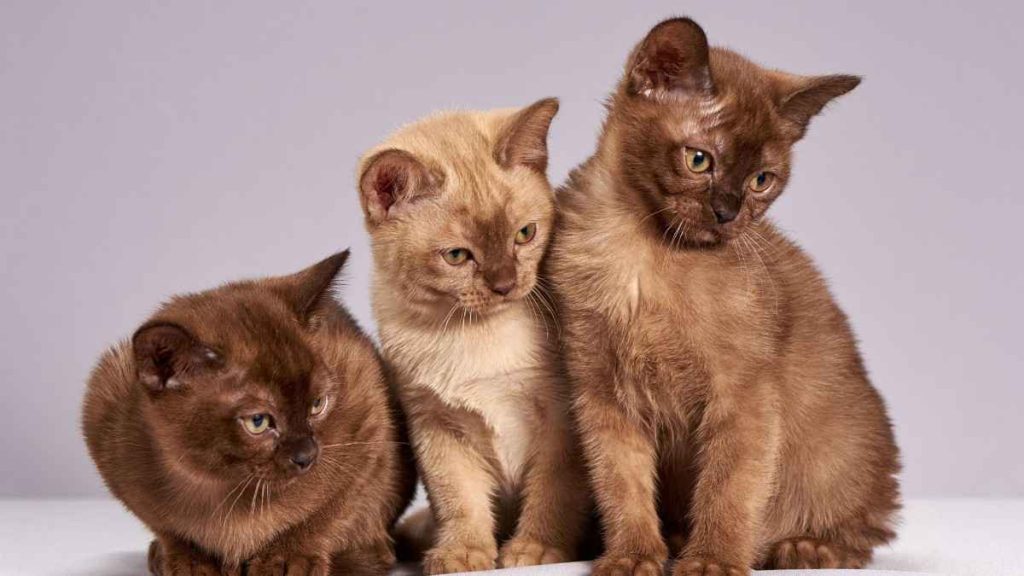If you’re a cat lover thinking about venturing into the world of breeding, the Burmese cat might just steal your heart and the hearts of future cat parents! Known for their affectionate personality and stunning appearance, Burmese cats are truly a joy to breed and raise. But like any serious commitment, it requires knowledge, patience, and a whole lot of love.
So let’s dive into the complete guide on breeding Burmese cats from picking the right pair to raising healthy, happy kittens.
History and Origins
The Burmese cat traces its roots back to Southeast Asia, particularly Thailand and Burma (now Myanmar). The breed was introduced to the Western world in the 1930s when a single female cat named Wong Mau made her way to the U.S., becoming the foundation of the modern Burmese breed.
Distinct Physical Features
Burmese cats are medium-sized with muscular, compact bodies. Their short, satin-like coats come in a variety of colors, with the most popular being sable. They have expressive gold or yellow eyes and a rounded head, giving them a perpetually curious look.
Temperament and Personality
Burmese cats are famously affectionate, outgoing, and people-oriented. They thrive on companionship, often following their humans from room to room. Their playful, kitten-like demeanor lasts well into adulthood, making them perfect family pets.
Why Choose Burmese Cats for Breeding?
Popularity and Demand
Due to their loving nature and manageable size, Burmese cats are in high demand. Many families seek them out specifically for their easy-going temperament and loyalty.
Loving Nature and Adaptability
They adjust well to different living environments apartments, houses, homes with kids, or other pets. This versatility makes them an ideal breed for both first-time and experienced cat breeders.
Preparing for Breeding Burmese Cats
Choosing the Right Breeding Pair
Selecting a good breeding pair is absolutely crucial. It sets the tone for the health, temperament, and quality of the kittens you’ll be raising.
Health Checks and Genetic Testing
Start with a vet check-up. Make sure both cats are up-to-date on vaccinations and have no underlying conditions. Genetic testing is also vital to avoid inherited diseases such as hypokalemia and craniofacial defects.
Evaluating Temperament and Lineage
Temperament is just as important as health. Look for gentle, social, and affectionate cats. Breeding cats from strong, healthy bloodlines ensures well-balanced kittens.
Proper Nutrition and Environment
Feed your breeding cats high-quality food rich in protein, vitamins, and minerals. Make sure their environment is stress-free, clean, and enriched with toys, scratching posts, and soft bedding.
Mating Process in Burmese Cats
Understanding the Heat Cycle
Female Burmese cats usually go into heat around 5-6 months of age. Signs include vocalizing, restlessness, and rubbing against objects. Always wait until your female is at least 12 months old before breeding.
Introducing the Mating Pair
Introduce the male and female in a calm, quiet setting. Observe closely to ensure there are no aggressive behaviors. It might take a few meetings for successful mating to occur.
Signs of Successful Mating
You may notice a “mating cry” followed by the female rolling on the floor. It’s often a strong indicator that mating was successful.
Pregnancy in Burmese Cats
Symptoms and Signs of Pregnancy
Within two weeks, you may notice behavioral changes and enlarged pink nipples—a sign called “pinking up.” The gestation period lasts about 63-65 days.
Care During Pregnancy
Give her lots of rest, quality nutrition, and regular vet checkups. Avoid stress and provide a cozy nesting area as the due date approaches.
Kittening: Birth and Early Care
Labor and Delivery
Most Burmese queens are excellent mothers. Labor may last a few hours, and kittens are usually born 30-60 minutes apart. Always keep your vet’s number nearby just in case.
Immediate Post-Birth Care
Ensure each kitten is nursing and warm. The mother will usually clean and care for them, but you should monitor closely during the first 24 hours.
Caring for Burmese Kittens
Feeding and Nutrition
Mother’s milk is best, but in case of emergency, a kitten milk replacer is needed. Kittens start to wean around 4 weeks old. Introduce wet food gradually.
Socialization and Handling
Start gentle handling early this helps with socialization. Burmese kittens are naturally friendly, but early interaction shapes lifelong behavior.
Health and Vaccinations
Deworming begins at 2 weeks. First vaccines start at 6-8 weeks. Keep a strict schedule and maintain vet records for future owners.
Challenges and Ethics in Breeding
Overbreeding and Genetic Risks
Avoid frequent breeding to protect the health of the mother. Inbreeding can lead to genetic problems always maintain genetic diversity.
Ethical Responsibilities of Breeders
Never breed just for profit. Ethical breeding means prioritizing the health and well-being of your cats and being ready to care for or rehome any kittens responsibly.
Tips for Responsible Breeding
Record Keeping and Documentation
Keep detailed records of lineage, medical history, mating dates, and kitten development. This ensures transparency and trust with future owners.
Finding Loving Homes for Kittens
Start looking for homes early. Interview potential adopters and provide information about the kitten’s care, personality, and needs.
Final Thoughts
Breeding Burmese cats is a rewarding but serious responsibility. These cats offer joy, love, and companionship, but they also need breeders who are committed to ethical, healthy practices. From selecting the right pair to watching kittens grow into playful, purring bundles of joy, the journey is one of love and learning. If you’re ready to commit, the Burmese breed is sure to make your breeding experience truly special.
Frequently Asked Questions (FAQs)
1. What age is best to breed a Burmese cat?
A female Burmese should ideally be bred after 12 months of age when she’s physically and emotionally mature.
2. How many kittens do Burmese cats usually have?
Burmese cats typically have 4–6 kittens per litter, though some can have up to 8.
3. Are Burmese kittens easy to raise?
Yes! They’re social, friendly, and adapt quickly to human interaction, making them easy and fun to raise.
4. How often can I breed a female Burmese cat?
Limit breeding to 1–2 litters per year to ensure the health and recovery of the mother.
5. Can Burmese cats be bred with other cat breeds?
While it’s possible, it’s discouraged in ethical breeding circles. Purebred Burmese maintain breed integrity and consistent health traits.


